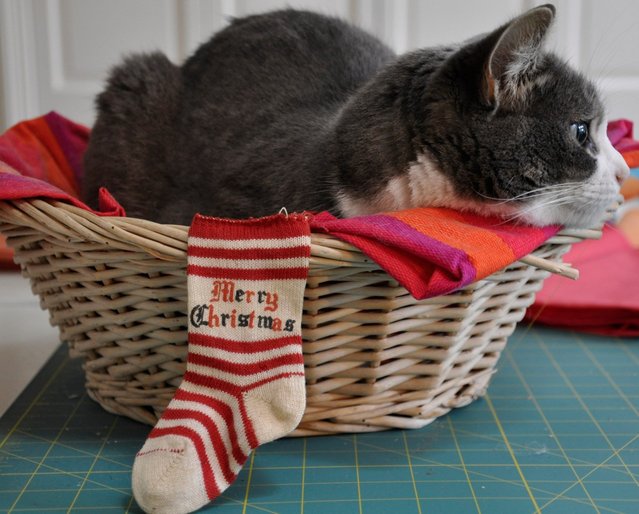
Over the course of several years, Alex's cat, Sparrow, has seen lots of tips come across her desk. This was an especially good year for ideas on machine quilting, organizing, taking photos, music to work by, and so much more. In case you missed any of them, here are Sparrow's Top 10 Tips for 2011. Pencil ready?
-
Parchment paper, intended for nonstick backing and cooking, does not have a silicone coating. It will not melt under an iron. Use parchment paper as a placement guide when when building an fusible appliqué block.
-
Take lots of photos for quilt inspiration. With digital cameras, there's no film or processing charge. Remember, if you are lucky, you get one good shot in a hundred. Have prints made of your best photographs, the ones you might want to use in the future, and put them in an album.
-
Use different types of music for different stages of the quiltmaking process. Music with no lyrics works well for the design period; pleasing rhythms allow the right side of the brain (the creative side) to function. For the construction stage, use music with a beat that keeps you motivated.
-
Make a mock-up- Be sure to create a mock-up before you sew. To create a good proportion, always cut, fold, or scrunch the unblocks to your envisioned size and shape and place them on a background fabric that is also cut to your desired finished size.
-
Using a single hole throat plate will go a long way to help improve stitch quality. The single hole helps guide the thread straight up and down as you move the fabric in all different directions. Don't lift your hands while the machine is still running. Let the machine stop before moving your hands to avoid off track stitches.
-
Did you know that you can run fusible web through your printer? That's right, if you have an ink-jet printer, you can put an 8 1/2" x 11" sheet of fusible through the printer. This way you can copy your designs right onto the fusible. No more tracing! The trick is to attach the sheet to a regular piece of paper using double- sided tape. You don't need much, just tack down the corners. Then, go ahead and print away. DO NOT DO THIS IF YOU HAVE A LASER OR THERMAL PRINTER. YOU'LL GET A GLUEY MESS!
-
Acrylic drafting triangles - especially the big right triangle make "truing up" cross fabric cuts a breeze.
-
An electric mustache trimmer to un-sew long seams. Runs fast, never nicks the fabric. I use my pressure foot on the machine to hold one side of the seam, and hold the other side in my left hand. then I run the trimmer along the inside of the seam, and voila!
-
Keep a record of your work in a file. The file should include notes on inspiration, technique, and the date you completed the piece. This will make it easy to fill out forms and answer requests when entering your work in shows or for publications.
-
Make your own "heavy-duty" starch. Mix 2/3 concentrated liquid starch such as Sta-flo with 1/3 water in an empty spray bottle.




.jpg)


